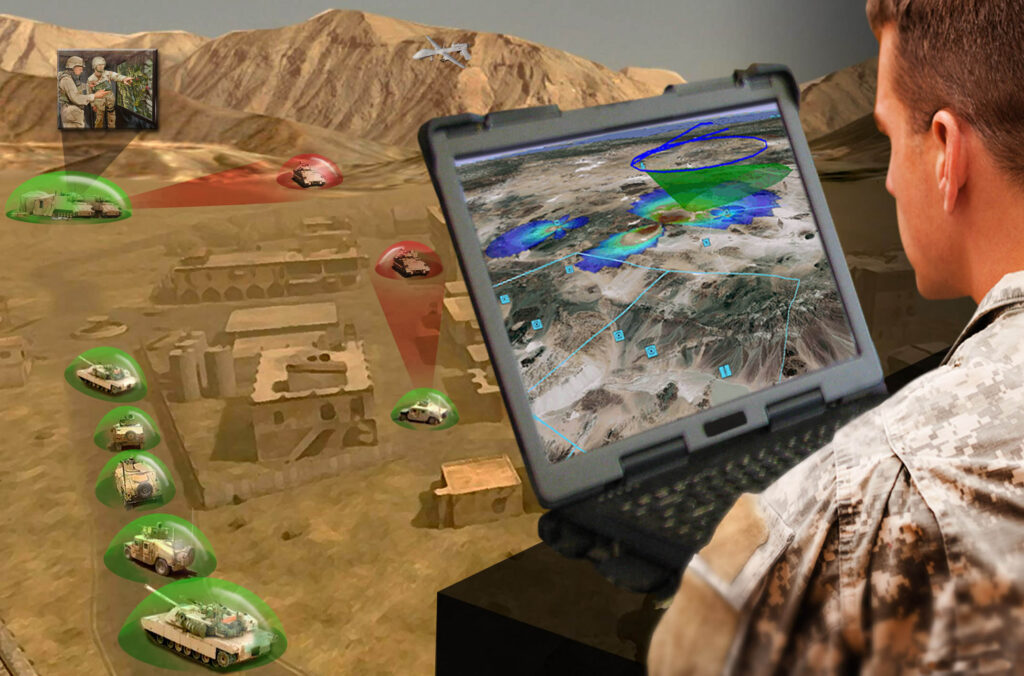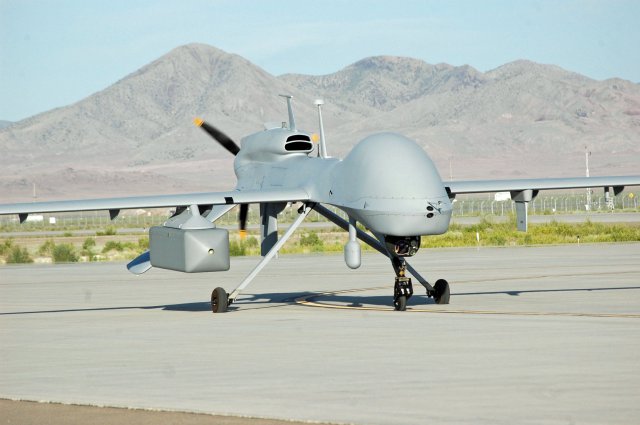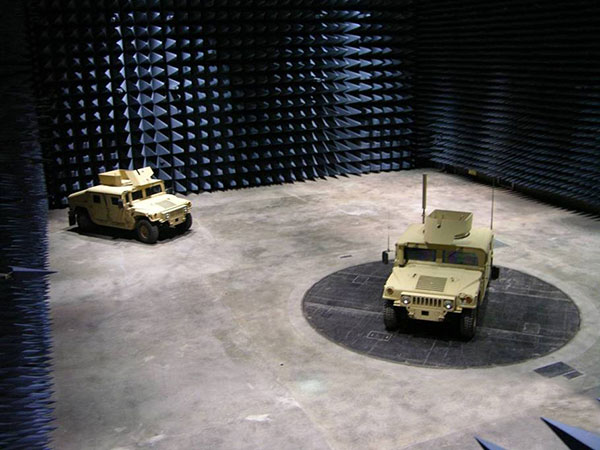By SYDNEY J. FREEDBERG JR.
 ARLINGTON: Outgunned in the airwaves by Russian jammers, the US Army has a new plan for electronic warfare. The Army hopes to rebuild the long-neglected EW branch more quickly — in part, paradoxically, by partially submerging it in other branches, namely military intelligence and cyber. The ground-based portion of the Multi-Function Electronic Warfare (MFEW) program will be folded into the intelligence branch’s Terrestrial Layer Intelligence System (TLIS). The argument is both branches need to sense and understand the radio spectrum before signals intelligence (SIGINT) can eavesdrop on transmissions or EW can jam them. TLIS will have both sensing and electronic attack (jamming) capabilities, cyber branch chief Maj. Gen. John Morrison told reporters, saying the Joint Requirements Oversight Council (JROC) recently approved an Initial Capabilities Document (ICD) for this approach.
ARLINGTON: Outgunned in the airwaves by Russian jammers, the US Army has a new plan for electronic warfare. The Army hopes to rebuild the long-neglected EW branch more quickly — in part, paradoxically, by partially submerging it in other branches, namely military intelligence and cyber. The ground-based portion of the Multi-Function Electronic Warfare (MFEW) program will be folded into the intelligence branch’s Terrestrial Layer Intelligence System (TLIS). The argument is both branches need to sense and understand the radio spectrum before signals intelligence (SIGINT) can eavesdrop on transmissions or EW can jam them. TLIS will have both sensing and electronic attack (jamming) capabilities, cyber branch chief Maj. Gen. John Morrison told reporters, saying the Joint Requirements Oversight Council (JROC) recently approved an Initial Capabilities Document (ICD) for this approach.
However, the airborne portion of Multi-Function Electronic Warfare, MFEW-Air, remains an independent program, Morrison said. It’s been reviewed by the Army Requirements Oversight Council (AROC, as opposed to JROC), and the program’s incorporating AROC feedback now.
For both programs, Morrison said, the Army is seeking good-enough interim solutions — informed by stopgap equipment urgently fielded to the 2nd Cavalry Regiment in Europe — so combat units can get capability faster than the original MFEW fielding date of 2023. “This is a tremendous year of delivery, because we’re going to deliver prototypes to the field,” said Maj. Gen. Patricia Frost, the cyber director on the Army’s Pentagon staff, at an Association of the US Army event. “We’re not going to wait six, ten years to build the perfect piece of kit.”
Who’ll use this new equipment? That brings us to the organizational aspect:
By spring, Morrison said, the Army will have designed a new unit, provisionally called a Military Intelligence/Electronic Warfare (MIEW) company, which will be added to combat brigades. (The process is called a Force Design Update, FDU). This will involve new troops, not just reallocating existing personnel, he said, so once the MIEW design is ready, it’ll have to go through the grueling Total Army Analysis (TAA) process to figure out where they actually come from.
Existing cyber warfare, electronic warfare, and related personnel in Army units at all levels will be reorganized into Cyber/Electromagnetic Activity (CEMA) cells, but that just moves personnel the units already have, Morrison said.
As announced earlier, the electronic warfare branch, never very prestigious or very large, is being merged into the Army’s newest and sexiest branch, cyber. That’s the branch Morrison leads from the cyber “schoolhouse” on Fort Gordon, Georgia, which also trains EW and signals personnel. There won’t even be a dedicated EW specialty within the overall cyber branch: By the end of next year, everyone with an EW Military Occupational Specialty (MOS 29 and MOS 290) will be redesignated MOS 17, Cyber.

The Army’s NERO program tested a converted Navy jammer on a Grey Eagle drone, the Army version of the Predator.
Synergy Or Hostile Takeover?
Is the Army bombing the EW village in order to save it? Or does merging EW programs and personnel into other parts of the Army provide useful synergies?
There is precedent for such combinations. The Marines, who unlike the Army never disbanded their EW forces, have not only deployed combined Cyber/Electronic Warfare Coordination Cells (CEWCCs), but are studying merging cyber/EW with information operations, military deception, and more. The Army’s own robust electronic warfare force of the Cold War was organized in intelligence-heavy Combat Electronic Warfare Intelligence (CEWI) battalions. And the Russians, clearly the world leader in ground-based electronic warfare, uses SIGINT-trained personnel in its EW units, so they can both listen to enemy signals (all the time) and jam them (as needed).
Raytheon systems continually evolve to employ the latest technologies.
The Army disbanded its Combat Electronic Warfare Intelligence (CEWI) units, like the one shown here, after the Cold War.
So there are real synergies. Both signals intelligence and electronic start with the need to detect, analyze, and understand the enemy’s transmissions. But there’s always a tension between the intel side’s desire to eavesdrop on enemy communications and operators’ desire to shut them down. Ultimately commanders make the call, but if intelligence and cyber dominate the acquisition process, personnel, and organization, those commanders may not have many EW options to choose from.
There’s also a between electronic and cyber warfare. EW deals with everything transmitted by radio, while cyber deals with everything that goes over a computer network, so they both deal with wireless networks, which is what almost all militaries use in the field. Electronic attack can shut down a wireless network that’s too hard to hack or transmit malware into an otherwise inaccessible system. But the two specialties are also very different. Cyberspace is a domain in which physical distance matters very little, whereas how radio waves propagate over distance, through weather, and over terrain is crucial to electronic warfare. In cyberspace, code and data can replicate infinitely at little cost, while electronic warfare requires making the most of limited power.
Col. Jeffrey Church
At least one long-serving electronic warrior was pessimistic that the new, combined efforts will pay adequate attention to EW. “The death of Army EW is here,” said retired Col. Jeffrey Church. His last assignment was heading the EW section on the Army’s Pentagon staff — which, by the way, has since been merged with the cyber section now run by Maj. Frost, herself a career military intelligence officer.
With the merger of electronic warfare and military intelligence programs, Church told me, “gear will be tied to MI requirements, and MI will waive EW portions or scrap programs with EW dual purpose while keeping MI-only programs.” With the merger of EW into the cyber branch and hybrid MI-EW units, he said, “EW Soldiers will be retasked by their cyber and MI leaders; they won’t do EW. As such, the EW personnel program will dwindle to nothing, with cyber and MI ‘handling’ those EW tasks — meaning no EW will be getting done.”
“Change won’t happen until one of our adversaries uses their EW to beat us in a fight,” Church warned. “Then, our Army will act surprised, ask how this could have happened to the best trained, equipped, and led force in the world, swear it will never happen again, and only then will they create a tactical and operational EW force like every military in the rest of the world is already doing.”

Inside an Army electronic warfare testing facility at White Sands.
The Price of Progress?
Army and industry leaders speaking today at the Association of the US Army were, unsurprisingly, more optimistic.
“There’s more happening now in the last year than I’ve seen happening in (electronic warfare) since 2006,” said Laurie Moe Buckhout, a retired EW colonel, who retired in 2010 after 26 years in the Army and now heads the consulting firm Corvus Group.
Brig. Gen. Patricia Frost
“We’re finally getting to the point where some of the rice bowls are shattering and people are actually starting to work together in terms of capability requirements, in terms of resources,” Buckhout told AUSA. “When people are willing to share pots of money and move ahead — and Army leadership is willing to force that collusion — it’s a wonderful thing.”
“You had a bunch of colonels leading these areas,” she continued (perhaps with Col. Church and herself in mind), “and colonels are wonderful people and hardworking, but there’s something about a general officer” — like Frost on the Pentagon staff and Morrison at the Fort Gordon schoolhouse — to get things “moving at mach speed.”
What about electronic warriors who’d prefer their own schoolhouse, their own branch, their own equipment, and maybe even their own domain that prioritized their operational needs?
“We can’t afford to build Abrams or Apache equivalents, a (separate) weapons system for the IO community, for the cyber community, for the EW community,” said George Lewis, a retired EW and SIGINT officer, who’s now vice president at defense contractor CACI. “We’ve got to be able to build multifunction capabilities.”
There’s “frustration, we understand, out in the field,” said Maj. Gen. Frost. “We’ve asked them to have a little tactical patience.”
No comments:
Post a Comment